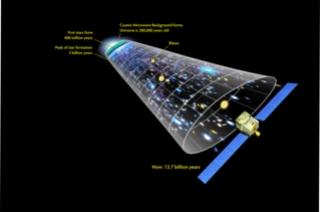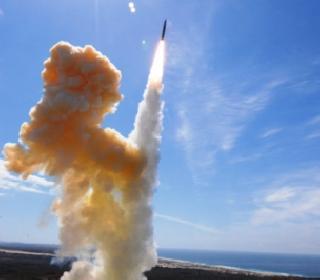
Ultraviolet and visible light emitted by all the stars that ever existed is still coursing through the universe. Astronomers refer to this "fog" of starlight as the extragalactic background light (EBL). Photo: NASA's Goddard Space Flight Centre.
WASHINGTON (PTI): Astronomers have made the most accurate measurement of starlight in the universe and used it to establish the total amount of light from all of the stars that have ever shone.
Using NASA's Fermi Gamma-ray Space Telescope, scientists determined how many gamma rays should be emitted at different energies.
More distant blazars show fewer gamma rays at higher energies - especially above 25 GeV - thanks to absorption by the cosmic fog.
Researchers then determined the average gamma-ray attenuation across three distance ranges between 9.6 billion years ago and today.
From this measurement, the scientists were able to estimate the fog's thickness.
The average stellar density in the cosmos is about 1.4 stars per 100 billion cubic light-years, which means the average distance between stars in the universe is about 4,150 light-years.
"The Fermi result opens up the exciting possibility of constraining the earliest period of cosmic star formation, thus setting the stage for NASA's James Webb Space Telescope," said Volker Bromm, an astronomer at the University of Texas.
"In simple terms, Fermi is providing us with a shadow image of the first stars, whereas Webb will directly detect them," Bromm said in a NASA statement.
Measuring the extragalactic background light was one of the primary mission goals for Fermi.
"We're very excited about the prospect of extending this measurement even farther," said Julie McEnery, the mission's project scientist at NASA's Goddard Space Flight Center.
Gamma rays are the most energetic form of light. Since the Fermi's launch in 2008, its Large Area Telescope (LAT) observes the entire sky in high-energy gamma rays every three hours, creating the most detailed map of the universe ever known at these energies.
The total sum of starlight in the cosmos is known to astronomers as the extragalactic background light (EBL). To gamma rays, the EBL functions as a kind of cosmic fog.
Ajello and his team investigated the EBL by studying gamma rays from 150 blazars, or galaxies powered by black holes, that were strongly detected at energies greater than 3 billion electron volts (GeV), or more than a billion times the energy of visible light.
 Previous Article
Previous Article Next Article
Next Article













The Indian Air Force, in its flight trials evaluation report submitted before the Defence Ministry l..
view articleAn insight into the Medium Multi-Role Combat Aircraft competition...
view articleSky enthusiasts can now spot the International Space Station (ISS) commanded by Indian-American astr..
view article